How I create my images of gulls in flight
It’s been a while since I wrote a post about techniques, so I’m going to share one about one of my favourite techniques, intentional camera movement. I’ve been taking hand held ICM pictures of the gulls in flight over the river Stour in Blandford Forum for many years. Its a technique many photographers employ to convey the movement, grace and mystery of birds in the air. In my mind these images evoke sufis dancing or otherworldly ethereal beings and I am always surprised and delighted when looking though the images when i get home at the balletic forms and swirling patterns. Gulls are a wonderful subject as it isn’t hard to find them, they are bold, large and busy and found in urban as well as coastal and countryside areas.
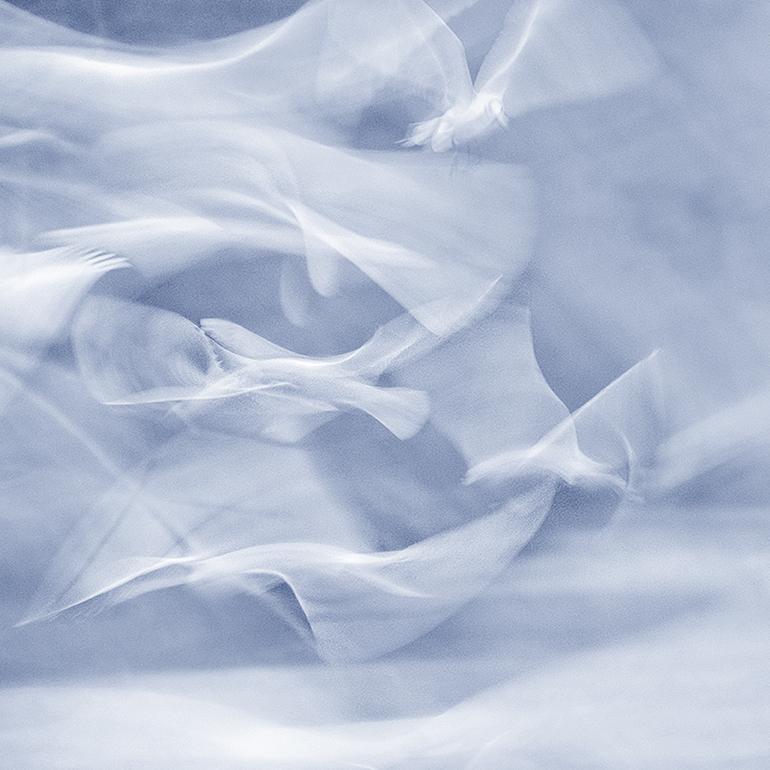
Many elements are at play when creating these images and I have found that contrast is key to capturing these images of birds. I usually shoot by the river, where I can position myself opposite dark trees and foliage, which provide a good backdrop as the gulls fly past. The reflections in the river are also a large part of many images, like the one below, so finding a stretch that is wide and free of aquaic vegeation is a good idea. Although I usually spend my time with gulls by the river, the ocean, cliffs, buildings and fields are also good locations.
Whilst my images are light and airy, they are more often than not taken on gloomy overcast days. often in light rain. Ths dull light helps both to contrast the white birds but also means I am not going to blow out all the highlights in my image as I shoot without ND filters.
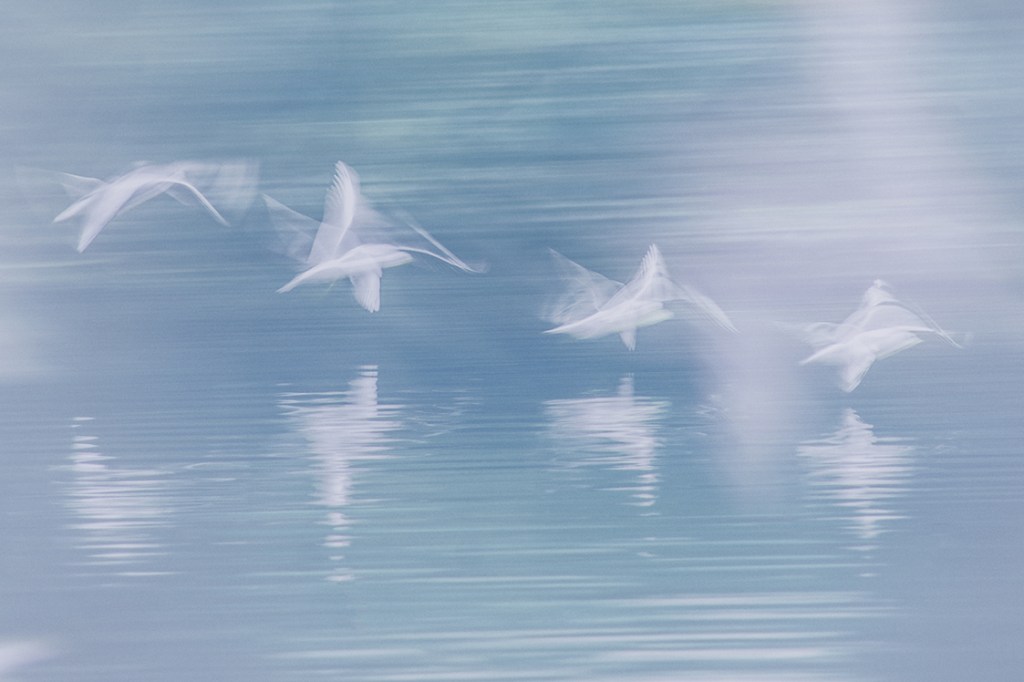
Kit
All the images in this post have been taken on a Sony A58, using either an old Minolta 70-300m f/4.5 or a Tamron 90mm f/2.8. A longer lens allows for birds at distance to be captured more easily, but gulls are often happy to come quite close, when that happens I find I can get better images with the prime lens. If you stumble across anyone feeding the birds then it is very easy to get quite close, in which case most focal legths will produce good images. It’s also possible to use a mobile phone camera, manually setting to a longer shutter speed, though I am rarely by the river without my camera so don’t tend to use my phone.
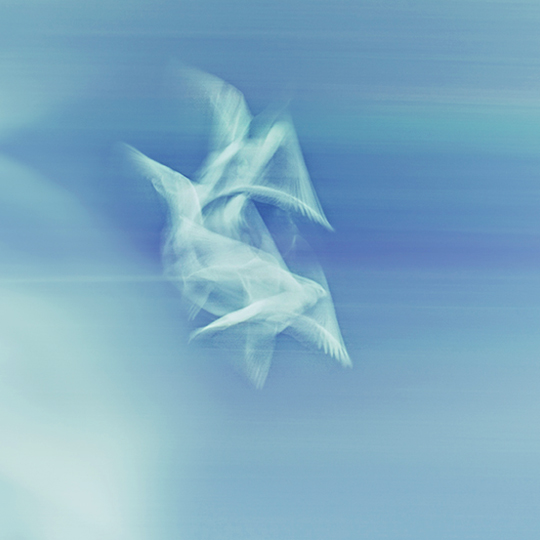
Techniques
I use two basic techniques to photograph the birds, both usually at about 1/8 – 1/10 sec on an overcast day. I will either pan with the bird, using spot focusing on the eye, or allow the bird to fly through the exposure. Both of these techniques are hand held. The second method works well if the bird is flying towards you, and allows you to capture detail in the face but blur the wings. he first method is the one I usually use, not only do I like the results, but it is really meditative to watch and follow the birds in this way, shooting in rhythm with their flight patterns. If you re anything like me and prone to losing yourself in the moment whist watching wildlife, then it’s probably worth making sure you aren’t too close to the waters edge.
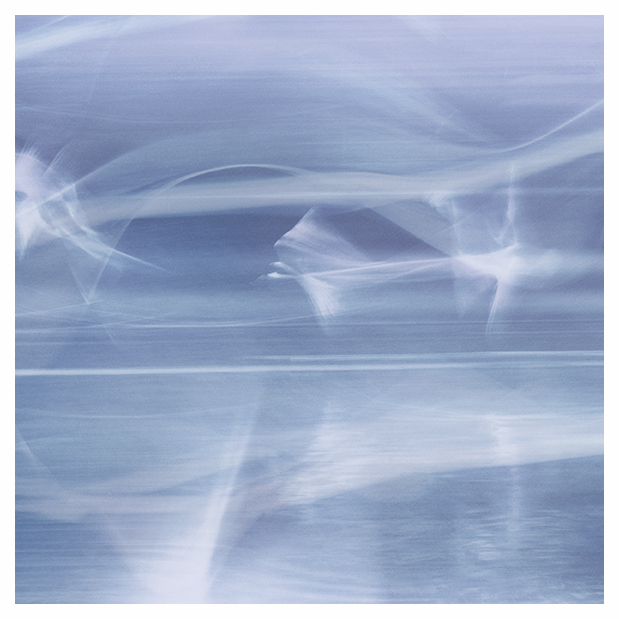
Processing
I edit my gull images in a few programmes. Initially I like to open the images in Lightroom, here I can adjust levels, often bringing down highlights and exposure and then using the adjustment brush to enhance the sharpness and texture on elements such as wing feathers or the beak and eyes. I may also play with the colour mixer at this point or apply cross processing to change or enhance the tones of the image The sesnor on my old camera is rather filthy, so next I will take the image to Photoshop and use the healing brush to remove the many dust spots. I’ll create a duplicate layer to work on, and adjust colour and curves in PS too, or in Camera Raw, which is becoming my favourite place to tweak images. These images have all then been processed in NIK, I like to use the film filters in Analogue Pro 2, occasionally I will make use of the Light Leaks to soften or add colour. Some of my images, like the one below, I have processed in NIK Silver Efex Pro 2, converting the image to a low contrast black and white. I have then used an overlay layer blending mode to mix the images and used the colour balance adjustment to tint the image, in this case by increasing the blue tones in the image.
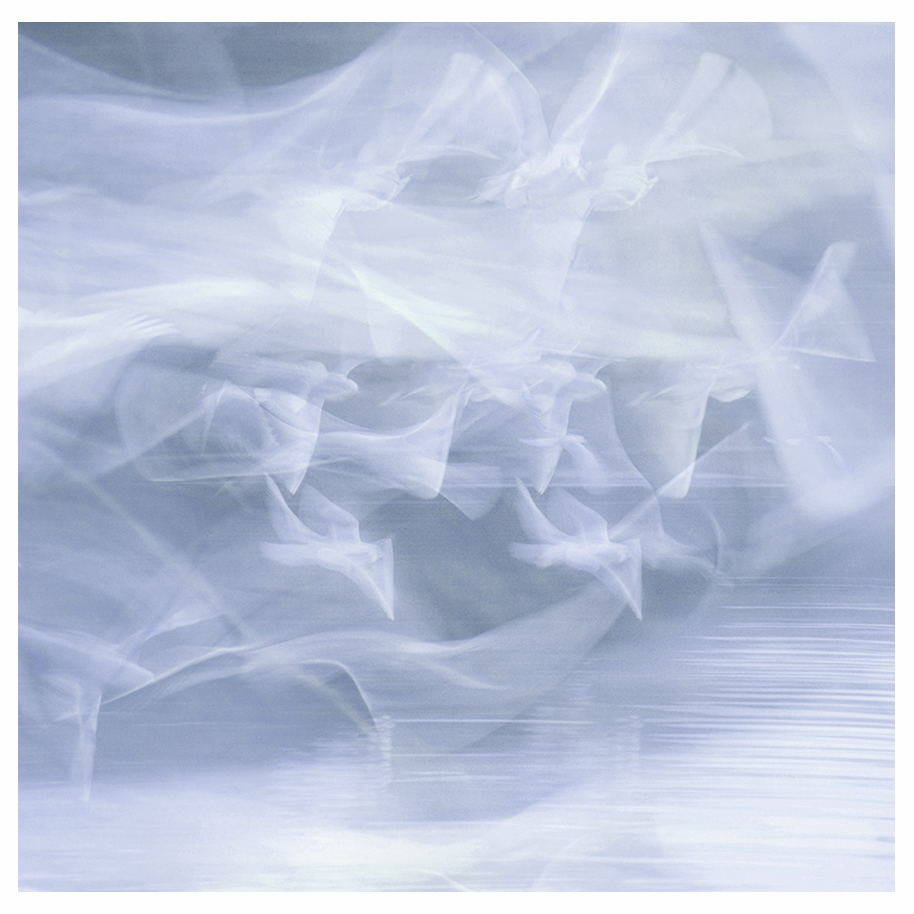
The image above has been created by layering a second identical exposure over the top of the original shot. I have then enlarged the second layer and rotated it so that elements of the wings appear as soft mists in the image. By using the original image as the second layer I can keep the coulours and tones identical and I think the blending and over all result is smoother. This is a technique I use quite a lot and you will see in many of my images. The blending in this case has been done just by lowering the opacity of the second layer rather than using any of the layer blending options in Photoshop. By doing this the images remain light and airy, however, dramatic results can be achieved if you do take your NIK layer and start playing with the blending modes in Photoshop.
The image below is a single exposure and has been created y allowing the birds to fly through the exposure as the camera was held still. This technique has created a ribbon effect of the wings and left the ripples in the water visible. All the other images in this post have been taken using the panning method.
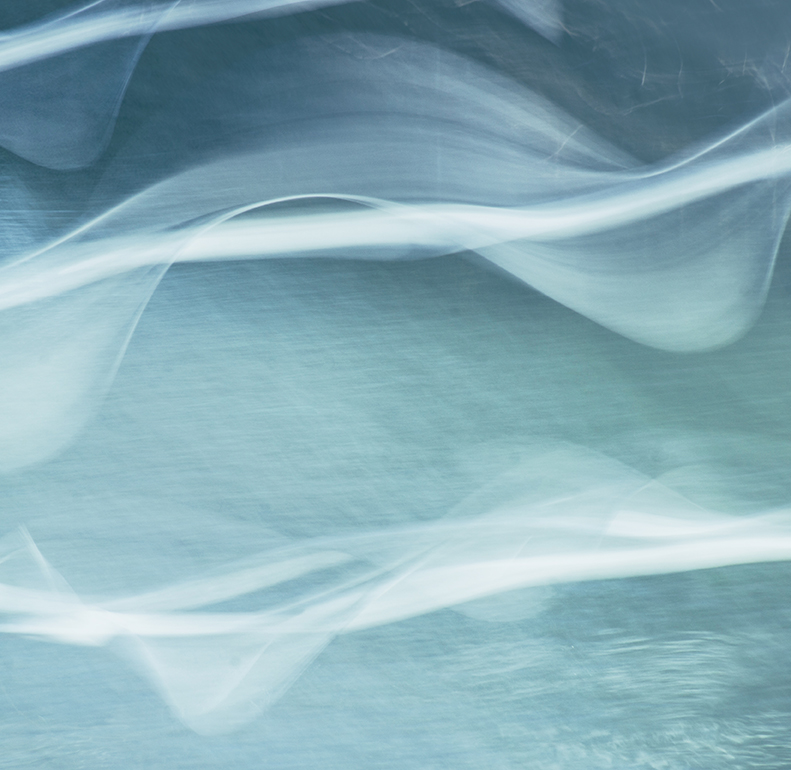
A last word
I hope this post has been helpful to those of you that have asked how I produce these images, I would like to end it with a quick word about ethics. Gulls are wild birds, and as such care needs to be taken not to disturb their usual behaviours. Disturbance causes the birds to use energy as they fly away and in the winter months calories can be harder to come by. Do keep your distance and be respectful, they will usually come to you soon enough. The Royal Photographic Society in partnership with the RSPB have published a guide to Nature Photography which sets everything you need to be aware of when photographing wildlife, you can read the guide HERE.
If you enjoy my work, or would like to help support what I do then please do consider buying a card HERE.
Thank you, Jo x
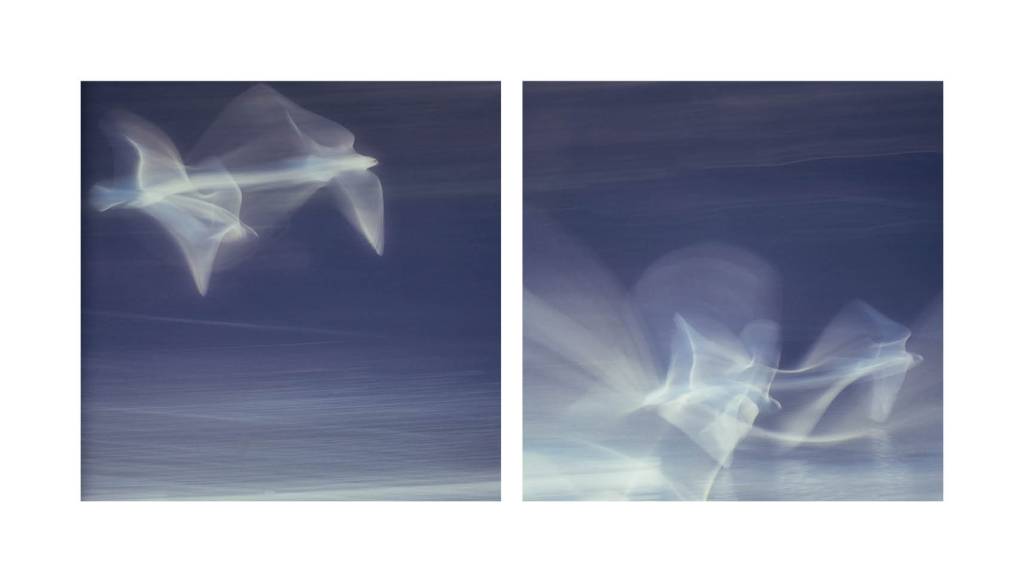

Thank you for sharing your knowledge, I love your photography and always look forward to your emails
LikeLiked by 1 person
You are so welcome, Wendy, thank you so much. x
LikeLike
Hi Jo
Excellent article.. thank you for posting.
We have, probably, 150 or so birds on the Thames at Windsor, black-headed gulls. Yesterday the whole lot took off after something went bang, and they just went round and round in a circle. Fascinating to watch.
Regards
Paul
On Saturday, January 23, 2021, Jo Stephen Photography wrote:
> jostephen posted: ” How I create my ICM gull images It’s been a while > since I wrote a post about techniques, so I’m going to share one about one > of my favourite techniques, intentional camera movement. I’ve been taking > hand held ICM pictures of the gulls in flight over ” >
LikeLike
Thanks so much, Paul. Its wonderful watching them in good numbers isn’t it? I just watched about 100 rooks fly over, sweeing and chattering, I was transfixed.
LikeLike
Thank you for sharing your knowledge. I can’t wait until we are free from restrictions. I’m looking forward to 1:1 training from you asap. Best wishes Denise
LikeLiked by 1 person
Youu are very welcome, Denise. Lets keep our fingers crossed it won’t be too much longer! Keep well & best wishes.
LikeLike
I am such a great lover of Impressionism, and would love to learn about more of your techniques please!
What you have just described is really extremely informative. Thank you ever so much for taking time to explain!
LikeLiked by 1 person
It’s my pleasure, thank you and I’m so pleased it’s helpful.
LikeLike
Huge thanks for this Jo. I’ve so enjoyed trying this technique out – with varying success – but will certainly continue.
?Best wishes
Sue James
Life is not about waiting for the storm to pass,
it is about learning to dance in the rain.
________________________________
LikeLiked by 1 person
My pleasure, Sue, I’m so pleased that it might be helpful. Thank you.
LikeLike
thanks you so much…I can’t wait to try this in the spring when the gulls return.
LikeLiked by 1 person
My pleasure, thank you for reading & I wish you many happy spring days with the gulls.
LikeLike
Thank you so much for sharing your ideas and ways of working with us Jo. As an enthusiastic amateur photographer myself in Dorset, I really appreciate your generosity because your work is really inspiring.
LikeLiked by 1 person
Thank you, Jane, that’s so kind, I hope if you try out any of the techniques that they’ll bring you much pleasure.
LikeLike
I know they will Jo, but I have yet to conquer Lightroom and Photoshop, and I struggle to do that by learning through YouTube videos. I was just setting up a series of 1-1 tutorials with a local photographer, and all this kicked off last March, so it will all have to wait! In the meantime it’s fun experimenting and playing, and getting to know some of the great photographers we have around us.
LikeLiked by 1 person
Thanks for sharing this Jo, a really interesting article. It’s a technique I’ve meant to try for awhile but never got round to it. I’ve been loving your artistry ever since I discovered you on Twitter, it’s very inspiring.
LikeLiked by 1 person
Thanks so much, Martin, I really hope you find as much pleasure and peace in photographing them as I do.
LikeLike
These are without a doubt the most beautiful images I’ll likely see on the internet today!
Initially when I read “+1.7 step” in the caption under several of the photos I had assumed you were referring to ND filters. Then, upon closer reading I see that you don’t use them. Is it safe to assume you’re then pushing the exposure 1.7 stops in Lightroom?
LikeLiked by 1 person
Thanks so much, Jeff! I’m pushing the exposure up on the camera’s settings.
LikeLiked by 1 person
Thanks for the tip. I’ve been thinking about ICM a lot recently and realized that since switching from Canon to Fujifilm about 4 years ago I haven’t done it once. I used to do it quite frequently before. You gull technique is something I’d never even considered. I’ll definitely be seeking out the seagull next time I’m on the seacoast.
LikeLike
Great article and lovely photos. Well done
LikeLiked by 1 person
Thank you, Keith
LikeLike
Thanks for your informative articles. I love impressionist photography – of birds, landscapes and people. Now I’m experimenting more with flowers – have a long way to go until I’m your level but really inspired by what you share. Appreciate your ethics too.
LikeLiked by 1 person
Thanks so much, it’s always lovely to connect with others who appreciate impressionism in photography. Wishing you many happy hours experimenting with flowers. They are just staring to appear here and I’m so looking forward to the bluebells. Best wishes.
LikeLiked by 1 person
I recently discovered your blog after following you on Instagram for a while- I love your art! And I so appreciate your tutorials- thank you so much for sharing your techniques. I’ve been using a slow shutter speed and sometimes ICM for my beach photography and now have been inspired by you to try it with gulls. I just returned from Alaska where I had a lot of fun experimenting with these techniques. Thanks so much!
LikeLiked by 1 person
Thanks so much, Melinda. I’m so pleased the blog has been useful and you’ve been inspired to have a go at some icm gulls. Alaska must have been amazing! Wishing you all the best.
LikeLike
Thank you for sharing your knowledge and experiences with ICM photography of birds in flight. I have seen another photographer, who did similar, and I wanted to try for myself. I have done a bit, very basic, ICM photography and now I’m eager to take it to new levels. And then why not try to find out, what others have done, instead of too many trial and errors (there will be plenty of these anyhow!)? This is how I found your description! Thank you again!
LikeLiked by 1 person
You are very welcome, I’m happy that the information was helpful to you. Wishing you all the very best in your creative journey!
LikeLike
I really admire your work and am impressed with how much of your process and knowledge you’ve taken the time to share here. Really commendable. So few photographic artists share their work in this way.
I’ve dabbled here and there with ICM and have perhaps a handful I’m happy with, though I’ve never thought of combining them in any way. Again, my sincere appreciation.
LikeLike